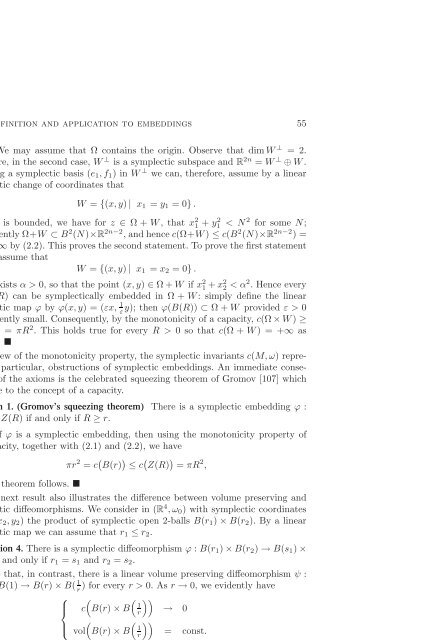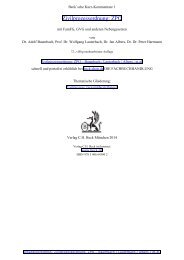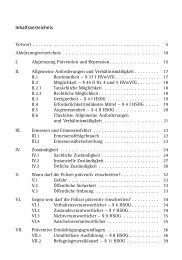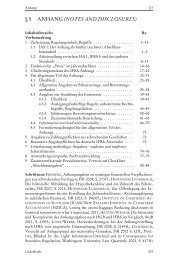Symplectic Invariants and Hamiltonian Dynamics - Hofer / Zehnder ...
Symplectic Invariants and Hamiltonian Dynamics - Hofer / Zehnder ...
Symplectic Invariants and Hamiltonian Dynamics - Hofer / Zehnder ...
Create successful ePaper yourself
Turn your PDF publications into a flip-book with our unique Google optimized e-Paper software.
finition <strong>and</strong> application to embeddings 55<br />
e may assume that Ω contains the origin. Observe that dim W ⊥ =2.<br />
e, in the second case, W ⊥ is a symplectic subspace <strong>and</strong> R 2n = W ⊥ ⊕ W .<br />
a symplectic basis (e1,f1) inW ⊥ we can, therefore, assume by a linear<br />
ic change of coordinates that<br />
W = {(x, y) | x1 = y1 =0} .<br />
is bounded, we have for z ∈ Ω+W ,thatx 2 1 + y2 1 0, so that the point (x, y) ∈ Ω+W if x2 1 + x22 0<br />
ntly small. Consequently, by the monotonicity of a capacity, c(Ω × W ) ≥<br />
= πR2 . This holds true for every R>0sothatc(Ω + W )=+∞as <br />
w of the monotonicity property, the symplectic invariants c(M,ω) repreparticular,<br />
obstructions of symplectic embeddings. An immediate consef<br />
the axioms is the celebrated squeezing theorem of Gromov [107] which<br />
to the concept of a capacity.<br />
1. (Gromov’s squeezing theorem) There is a symplectic embedding ϕ :<br />
Z(R) if <strong>and</strong> only if R ≥ r.<br />
ϕ is a symplectic embedding, then using the monotonicity property of<br />
city, together with (2.1) <strong>and</strong> (2.2), we have<br />
theorem follows. <br />
πr 2 = c B(r) ≤ c Z(R) = πR 2 ,<br />
next result also illustrates the difference between volume preserving <strong>and</strong><br />
ic diffeomorphisms. We consider in (R 4 ,ω0) with symplectic coordinates<br />
2,y2) the product of symplectic open 2-balls B(r1) × B(r2). By a linear<br />
ic map we can assume that r1 ≤ r2.<br />
ion 4. There is a symplectic diffeomorphism ϕ : B(r1) × B(r2) → B(s1) ×<br />
<strong>and</strong> only if r1 = s1 <strong>and</strong> r2 = s2.<br />
that, in contrast, there is a linear volume preserving diffeomorphism ψ :<br />
(1) → B(r) × B( 1)<br />
for every r>0. As r → 0, we evidently have<br />
r<br />
⎧ <br />
⎪⎨<br />
1<br />
c B(r) × B r → 0<br />
<br />
⎪⎩<br />
1<br />
vol B(r) × B = const.<br />
r

















